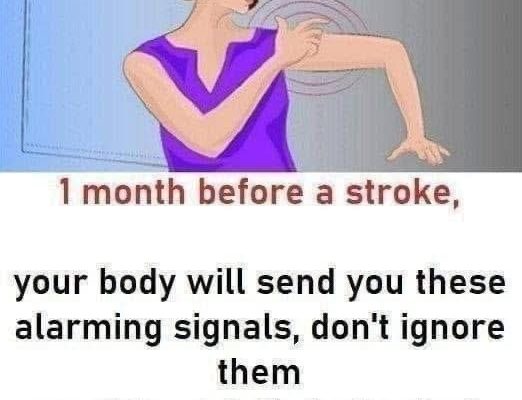Strokes pose a serious risk. As such, you ought to exercise caution and see a physician as soon as you experience any of these warning symptoms.
Strokes take countless lives each year. It is a blood clot-related obstruction or rupture of a blood artery in the brain. At this time, the cells will stop receiving oxygen and irrigation and start to deteriorate. The body will suffer grave effects from this, necessitating immediate medical attention. Certain signs may appear around one month prior to the strokes if they seem to occur unexpectedly.
The many kinds of stroke
Recognize that there are two or perhaps three different sorts of strokes rather than simply one:
ischemia stroke
85% of stroke cases are caused by cerebral infarction, another name for it. Consequently, it is the most typical kind of stroke. Cerebral thrombosis occurs when the artery supplying blood to the brain gets blocked by plaque high in cholesterol, or atherosclerosis. When a blood clot gets in the way, it’s referred to as a cerebral embolism.
15% of stroke cases are hemorrhagic strokes, which are less frequent. Aneurysm rupture is the primary cause. Cerebral hemorrhages may also result from tumors, hypertensive crises, and other bleeding conditions, according to the Ministry of Health.
Attack by Transient Ischemic
This third kind of brain injury is not a stroke in the traditional meaning of the word. In fact, it is referred to as a transient ischemic attack if the artery-blocking factor goes away on its own and causes no aftereffects. In terms of the symptoms, they should be the same as those of a stroke and should only last a few seconds or minutes before going away entirely. These factors contribute to the difficulty in identifying transient ischemic attacks (TIAs), which may even be mistaken for a general feeling of illness. But because there is still a chance of stroke, it is crucial to be on guard and call 15 if this occurs.
Learn the warning signals that may indicate a stroke one month in advance to aid in its prompt treatment.
Body numbness or weakness is a sign of a stroke.
The face, limbs, and legs all show this. Because a stroke affects just one hemisphere of the brain, it often only affects the right or left side of the body. Therefore, a grin that seems weaker on one side of the lips or numbness in the arm are two indicators that should be taken seriously.
A stroke may cause fainting.
Blackouts, fainting, dizziness, and a “spinning” sensation are among more concerning signs. Although they don’t always indicate a stroke, they do indicate a serious health issue, so it’s best to get medical advice as a precaution.
Vision is affected by a stroke.
It is possible for abrupt visual difficulties to arise prior to a stroke. You may have impaired vision, glare, loss of color perception, or even blindness.
A headache may be a sign of a stroke.
Headaches that are sudden and very severe might occur sometimes. They may be so strong that vomiting occurs along with them. They may indicate something more serious than a straightforward migraine.
impairment of coordination after a stroke
It is possible to get unexpectedly disoriented and unable to move normally just before having a stroke. It may impact one particular area or the whole body. Additionally, trouble speaking or finding words might occur.
Breathlessness: a possible stroke symptom
In many instances, experiencing dyspnea in an unfamiliar setting without any additional or minor exertion may potentially serve as an early warning indication of a stroke.
Do not hesitate to get in touch with a specialist if you are even the least bit unsure about your health.
